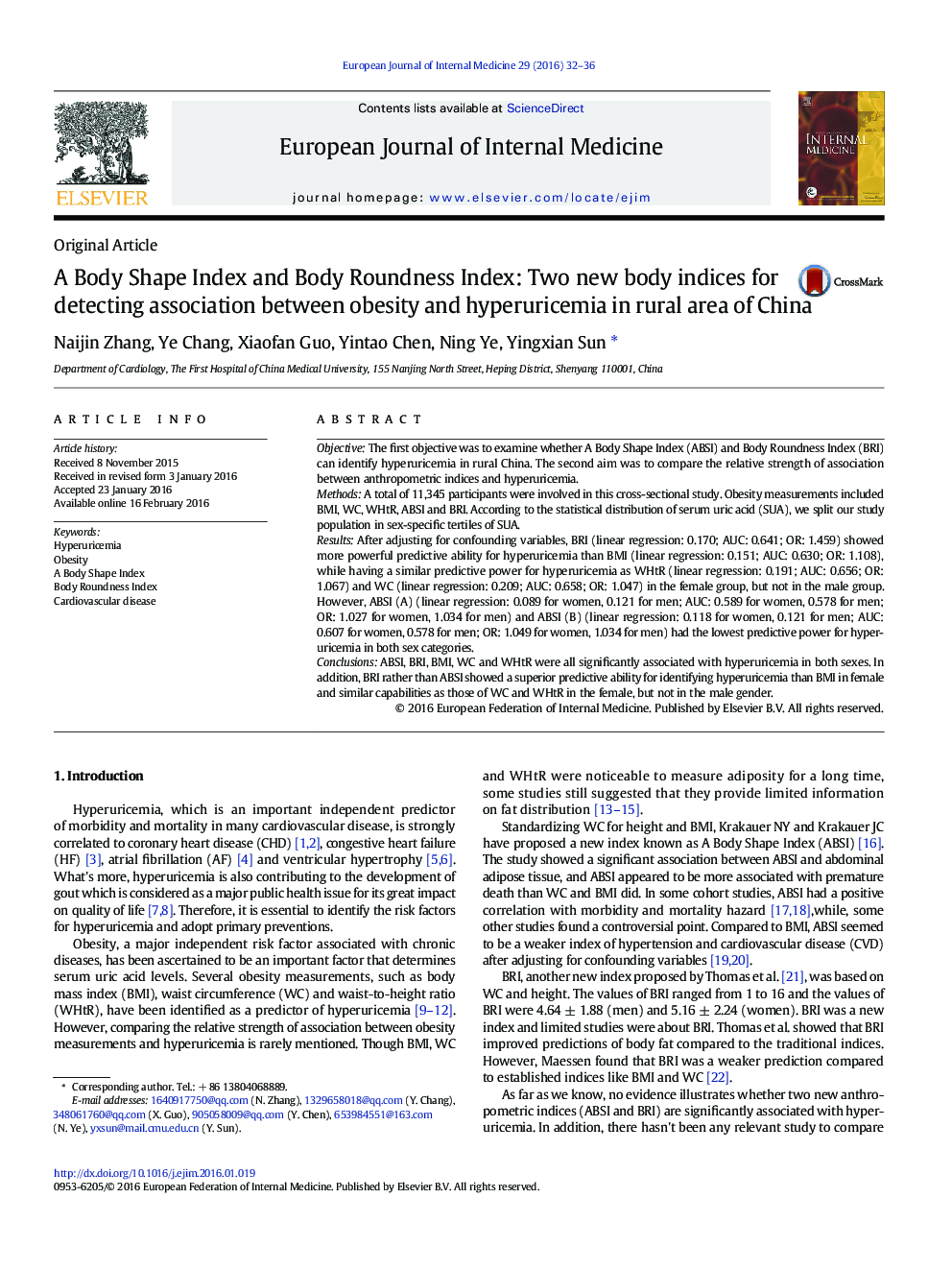| کد مقاله | کد نشریه | سال انتشار | مقاله انگلیسی | نسخه تمام متن |
|---|---|---|---|---|
| 3465973 | 1596537 | 2016 | 5 صفحه PDF | دانلود رایگان |
• A total of 11,345 participants were involved in this cross-sectional study.
• A Body Shape Index (ABSI) and Body Roundness Index (BRI) can identify hyperuricemia.
• BRI showed a superior predictive ability for hyperuricemia than BMI in female.
• ABSI was not the superior measurement to detect hyperuricemia.
ABSTRACTObjectiveThe first objective was to examine whether A Body Shape Index (ABSI) and Body Roundness Index (BRI) can identify hyperuricemia in rural China. The second aim was to compare the relative strength of association between anthropometric indices and hyperuricemia.MethodsA total of 11,345 participants were involved in this cross-sectional study. Obesity measurements included BMI, WC, WHtR, ABSI and BRI. According to the statistical distribution of serum uric acid (SUA), we split our study population in sex-specific tertiles of SUA.ResultsAfter adjusting for confounding variables, BRI (linear regression: 0.170; AUC: 0.641; OR: 1.459) showed more powerful predictive ability for hyperuricemia than BMI (linear regression: 0.151; AUC: 0.630; OR: 1.108), while having a similar predictive power for hyperuricemia as WHtR (linear regression: 0.191; AUC: 0.656; OR: 1.067) and WC (linear regression: 0.209; AUC: 0.658; OR: 1.047) in the female group, but not in the male group. However, ABSI (A) (linear regression: 0.089 for women, 0.121 for men; AUC: 0.589 for women, 0.578 for men; OR: 1.027 for women, 1.034 for men) and ABSI (B) (linear regression: 0.118 for women, 0.121 for men; AUC: 0.607 for women, 0.578 for men; OR: 1.049 for women, 1.034 for men) had the lowest predictive power for hyperuricemia in both sex categories.ConclusionsABSI, BRI, BMI, WC and WHtR were all significantly associated with hyperuricemia in both sexes. In addition, BRI rather than ABSI showed a superior predictive ability for identifying hyperuricemia than BMI in female and similar capabilities as those of WC and WHtR in the female, but not in the male gender.
Journal: European Journal of Internal Medicine - Volume 29, April 2016, Pages 32–36
